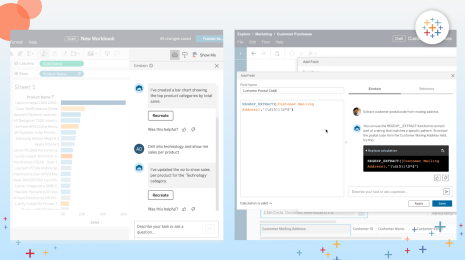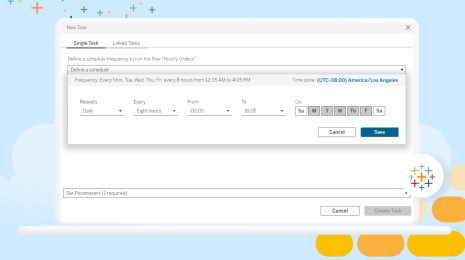“Keys” to success with Tableau licensing
Learn about Tableau license management features that help administrators more efficiently activate, track, and optimize Tableau product utilization.
Editor’s Note: Tableau Online is now Tableau Cloud.
How quickly can people in your organization get access to data in Tableau? When someone gets their Creator, Explorer, or Viewer license, they gain valuable capabilities across Tableau Server, Online, Desktop, or Prep to utilize the power of data with Tableau analytics. Enabling organizations to easily and efficiently manage Tableau licenses is a critical part of Tableau’s mission to help people see and understand data. Imagine you’re in charge of deploying Tableau to drive ubiquitous data access across your company. You wonder, how can you better manage licenses given your organization’s structure and needs? This post walks through some common situations that use the latest Tableau features to manage licensing more effectively.
License on demand with grant license on sign in
The situation
Imagine you have a group of 100 salespeople in your 500-employee organization. Some members of the sales team are going to jump at the chance to gain data insights from Tableau. And others will take a little time to become as data-driven. The problem is that you don't know which salespeople are potential "data rock stars" to assign licenses immediately.
Before Tableau 2020.3, you might have asked each employee to file a request or send you an email to request a license to Tableau. This process would have required someone in your organization to manually provision each license while each requestor patiently waited for access. Or you might have just lived with a suboptimal license utilization.
Suppose you license all 100 salespeople, and only 30 licenses get used actively. In that case, you end up with a whopping 70 licenses unused—meaning 70 fewer licenses available for the data rocks stars in Marketing, Operations, and Finance. Assuming these are Viewer roles, that’s $12 per month times 70 seats, totaling $10,080 per year that could be invested in other departments to activate data-driven decision-making! So what do you do?

The solution
With 2020.3, Tableau introduced grant license on sign in for Tableau Server and Online. As data-hungry salespeople sign in, they’re granted a license. The others stay unlicensed. The automated process to grant licenses to those who need them helps you get the most value out of your Tableau licenses.
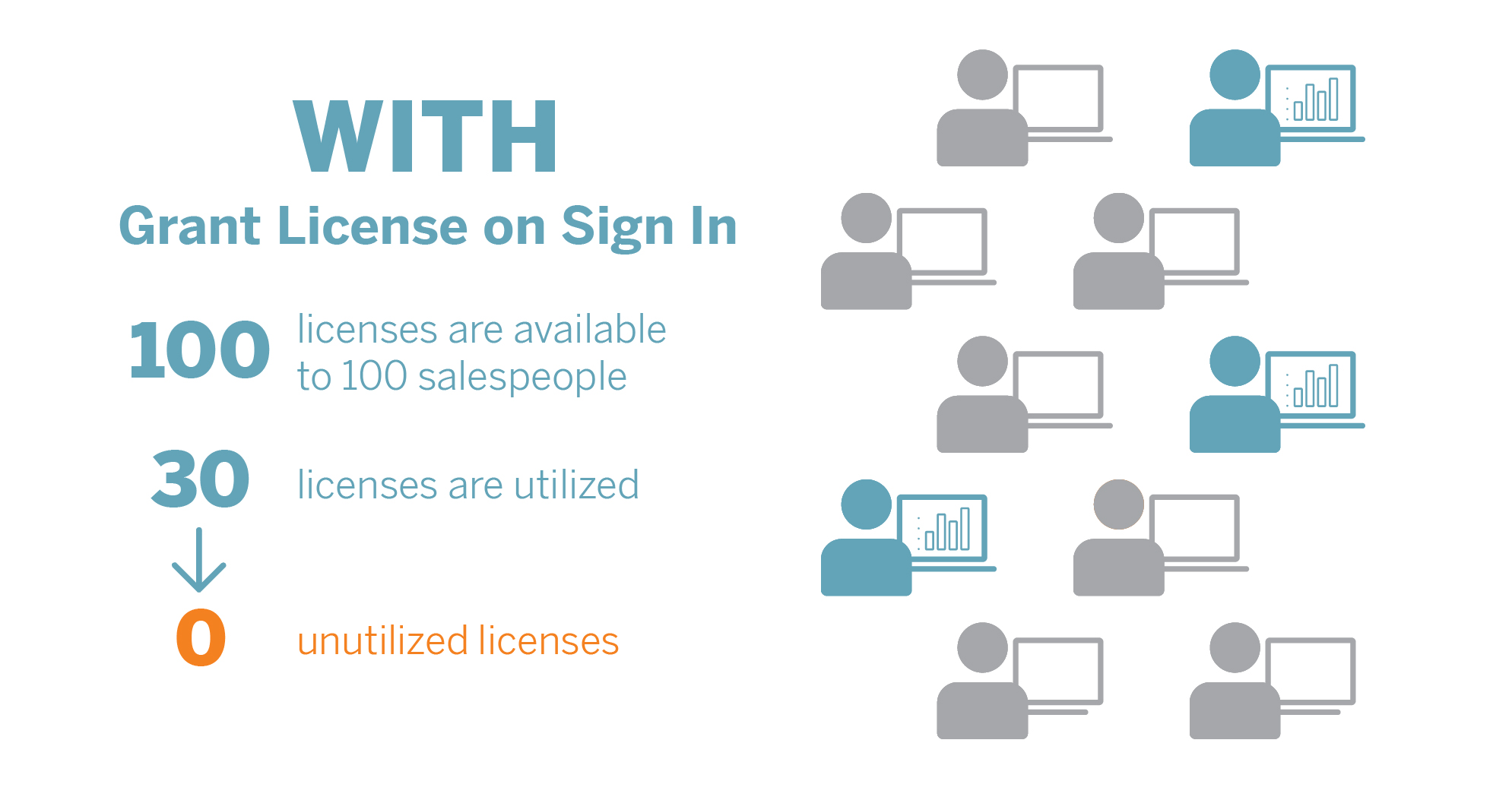
This new option helps your organization quickly deploy Tableau at scale, optimizing your seat investment, and getting more value out of Tableau. Many organizations have a high potential user count but lower actual user scenarios. For those organizations, using this feature with role-based subscription licensing allows you to scale with a flexible licensing pool of users, and to more flexibly scale hardware to meet their needs.
Grant license on sign not only reduces administrator overhead associated with manually issuing licenses, but it removes the user’s need to request a license before using Tableau, giving them faster access to data when they need it—a win-win! It can also be used with login-based license management (LBLM) to manage Creator licenses.
Getting started with grant license on sign in
When importing, creating, or modifying a group, check the Grant role on sign in option. Make sure you have specified the appropriate site role.

A few best practices to keep in mind:
- Make licensing changes before enabling the Grant role on sign in option, such as unlicensing users who have never signed in. User’s existing site roles won’t change when the feature is enabled (only when they sign in). Once enabled, members in the group cannot be “demoted” to a lower role (including unlicensed) without first being removed from the user group.
- Users receiving subscriptions should stay licensed. If you have users receiving subscriptions to Tableau dashboards but aren’t signing in to Tableau, this feature will cause their subscriptions to stop working. We recommend keeping these folks licensed (this might be your boss’s boss), so they can receive the data they need—even if they rarely or never sign in.
- Enable access for everyone. If you’re getting started with Tableau, we recommend bringing all potential users into Tableau as unlicensed users in a group and enabling this feature. This way, any user can get instant access while you optimize your usage. You can monitor adoption by looking at the group membership and scale-up licenses as needed.
Simplify Desktop licensing with login-based license management
The situation
Managing license keys for Creators via product keys can be challenging, especially in large organizations, or if you are using non-persistent virtual machines. As Tableau usage explodes within your organization, more and more users will be installing Tableau Desktop and Tableau Prep Builder. Each one of those users will need to activate their install via a license key before using that product.
Let's imagine you are the Server Admin of a large consulting company with ten thousand Tableau users. You are responsible for provisioning access to Tableau Desktop and Tableau Prep and managing Tableau licenses. You manage every single license key, tracking assignments to users and when users switch departments or move out of the company—and you probably struggle with reclaiming those licenses. Needless to say, managing all those product keys is a nightmare, isn't it?
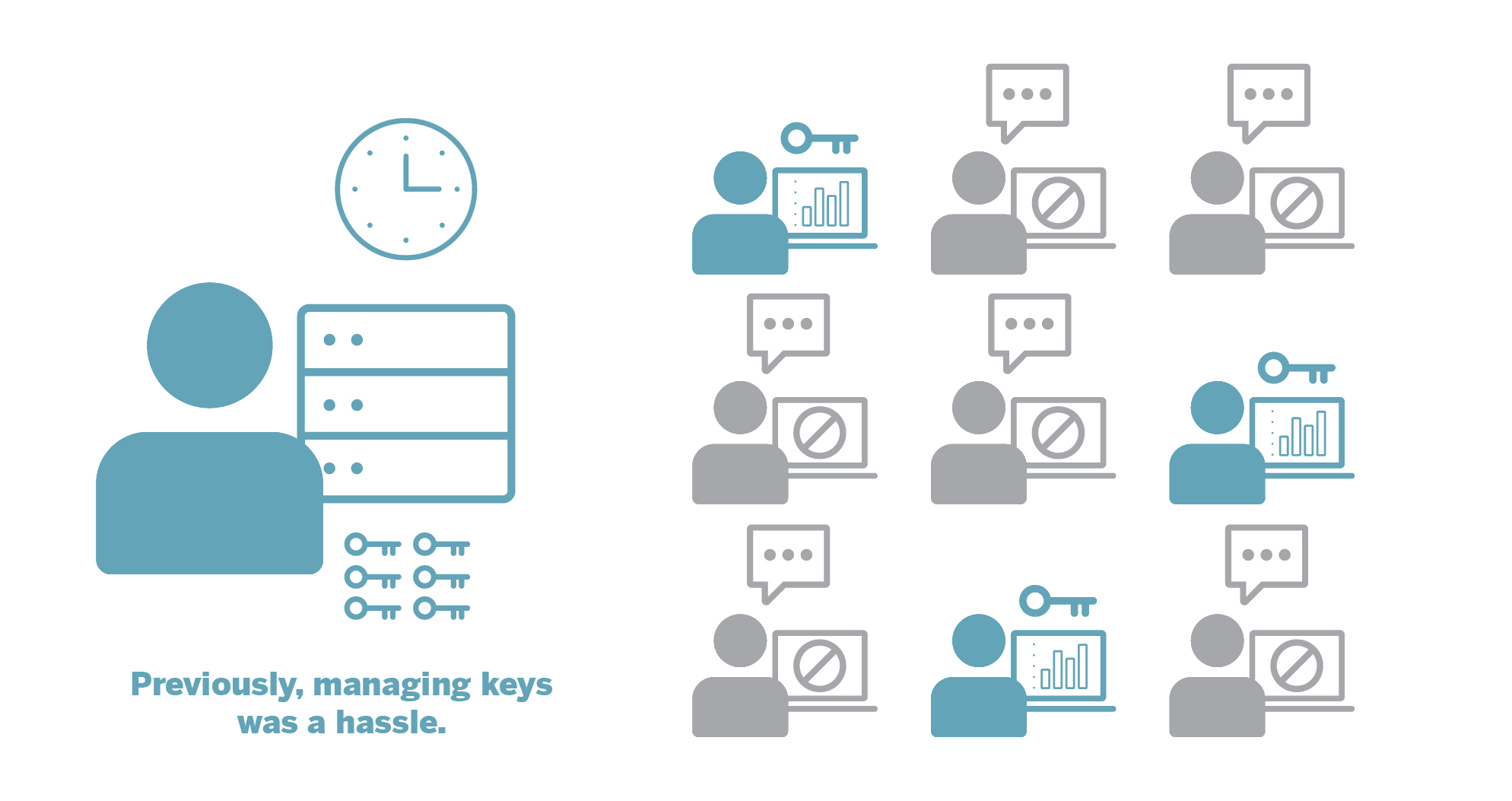
The solution
Starting in 2020.1, Tableau introduced a new license management feature designed to help simplify product key management. Login-based license management (or just LBLM for short) does away with the need to use individual product keys to activate Tableau Desktop and Tableau Prep Builder. Instead, you use your user licenses on Tableau Server and Tableau Online to provide activation.
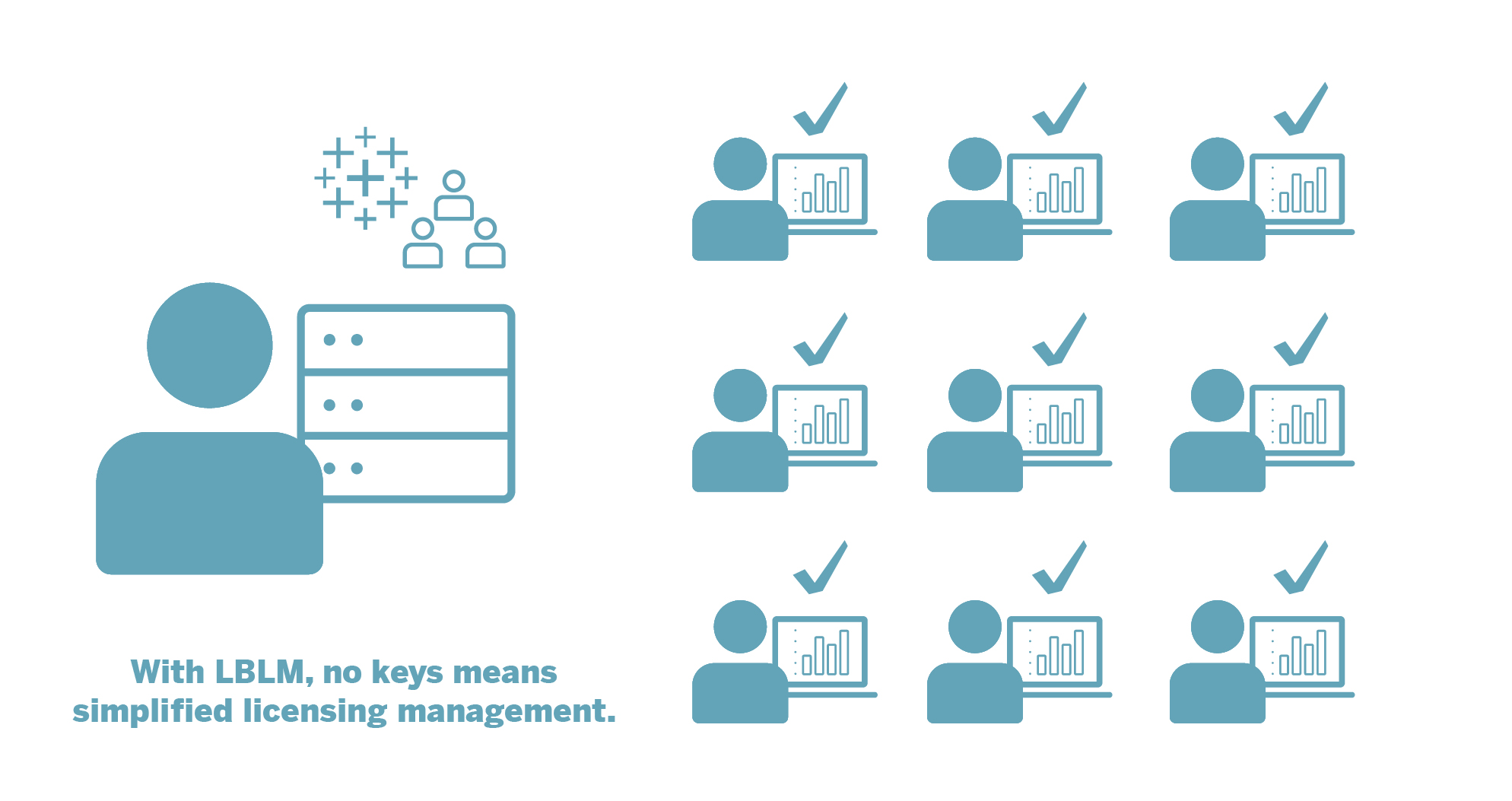
Provisioning licenses to end-users
To provision licenses to end users, you’ll simply assign a Creator license role to the designated end-user population. Those Creator users can then leverage their Server login credentials to activate their respective instances of Tableau Desktop and Prep Builder on their local machines. That's it—no more individual product keys needed!
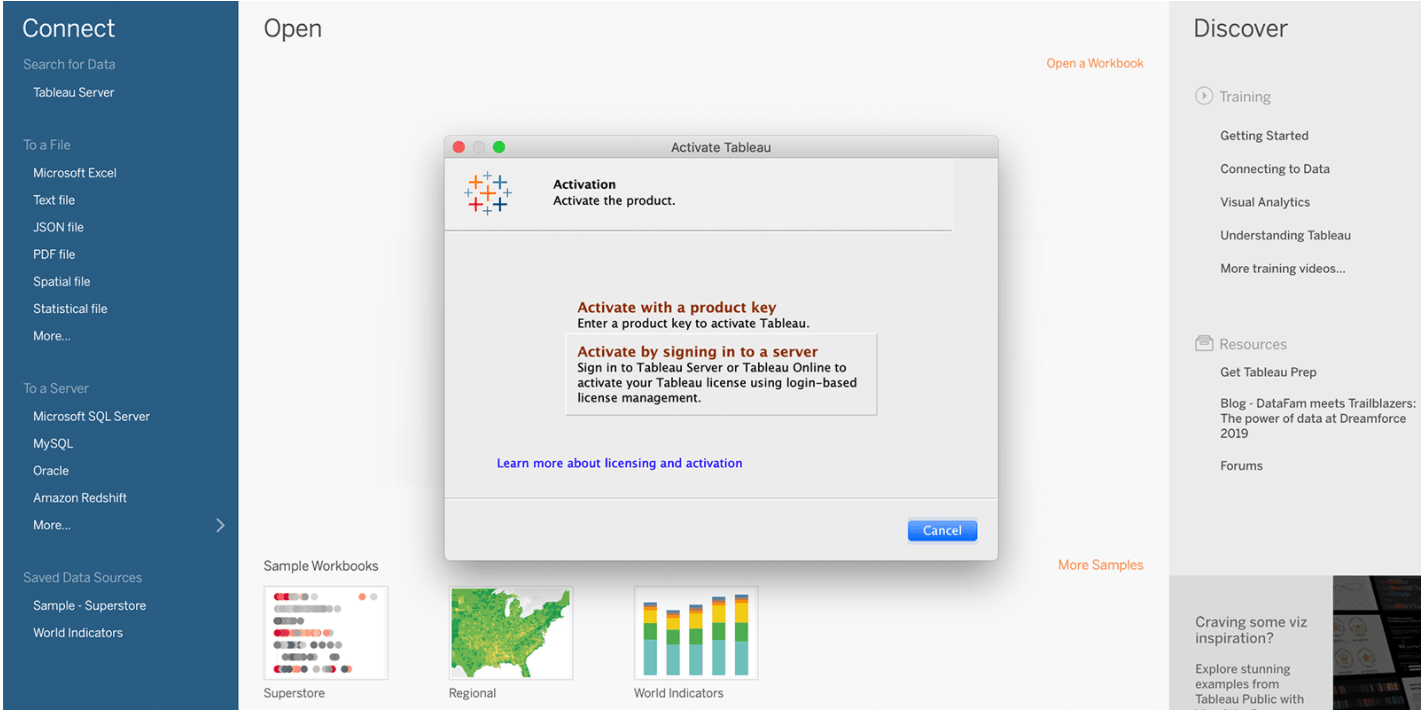
Reclaiming a Creator license
As a Tableau Admin, you can unlicense an end-user within Tableau Server. Just like that, the Creator license is available for reallocation elsewhere. You no longer need to rely on end-users or your IT staff to reclaim Creator product keys from the client machines manually. And because this removes end-users’ access to product keys, you no longer have to worry about the keys getting in others’ hands for unauthorized use. Happy days!
Tracking licenses
As a Tableau Admin, you will have access to an out-of-the-box admin view “Login-based license usage” that provides live, up-to-date information about users who are actively using Tableau Desktop and/or Prep. Easy right?
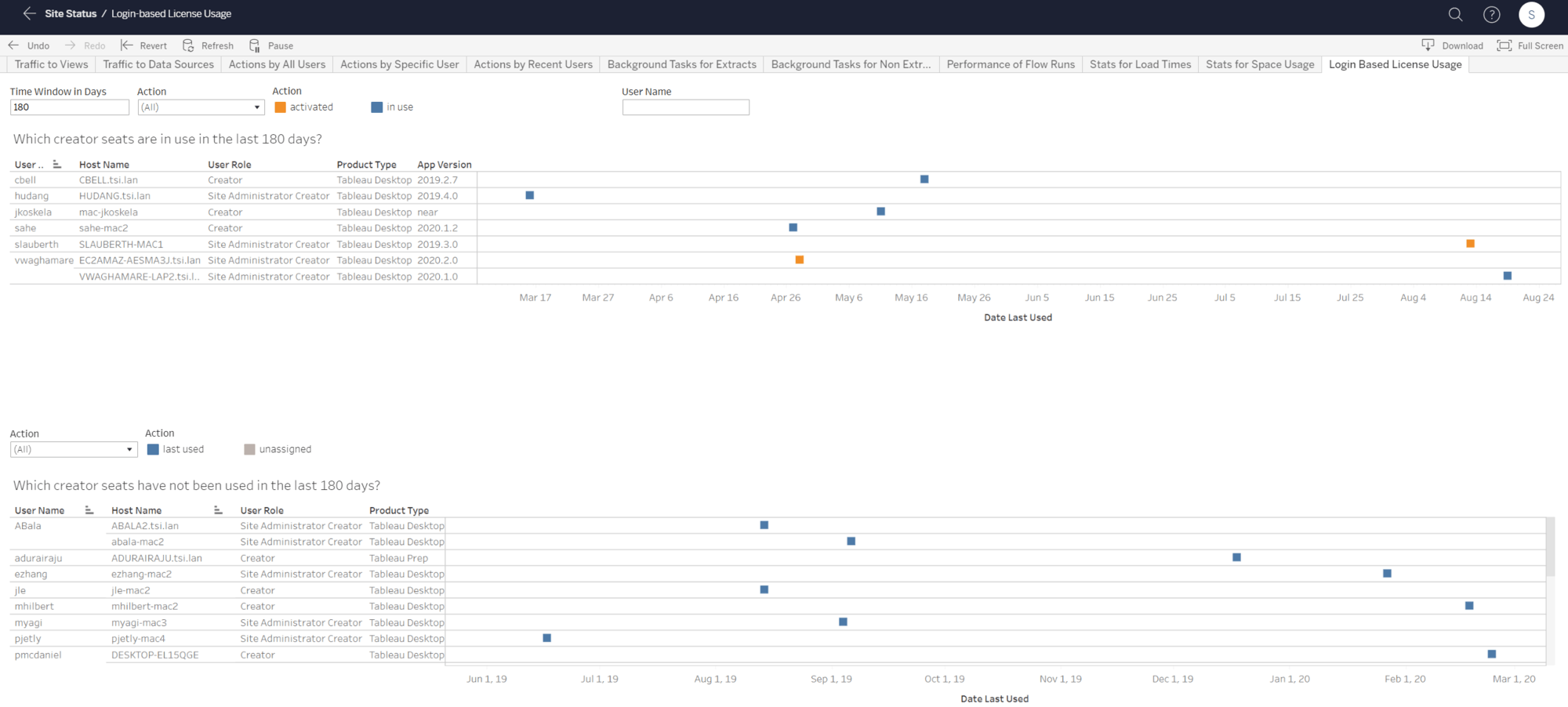
Enable self-service departments with site role quotas
Note: The following example using site role quotas is applicable to Tableau Server customers.
The situation
Imagine that your organization purchases Tableau centrally, but has each department manage its own licensing and permissions on separate sites. The Server Admin gives the licensing responsibility to each department’s site administrator. Since sales, finance, and marketing all share the cost and deployment of Tableau Server, each department expects to receive their fair share of the licenses. One Site Admin could take all the licenses from the Server, leaving another department with no licenses available. How might you prevent this from happening?
Your desired state may look something like this:

The solution
With Tableau Server 2020.1, we launched site role limits to enable Server Admins to set limits on the number of users per role on a given Tableau site. You can configure it in Tableau Server for new and existing sites using their site settings. Site role limits is accessible from each site’s Settings left-nav item and from the Sites left-nav item when managing all sites. Server Admins can also configure the limits via REST API.

Site role limits also work with LBLM to help with the distribution of Desktop and Prep Builder in organizations.
Combining these concepts
Note: The following example brings the three concepts we’ve discussed together, and is applicable to Tableau Server customers.

Let’s imagine you want to allow the Marketing, Sales and Finance site administrators to manage Explorer and Viewers licenses, but you want to have centralized control over Creator licenses. You can combine LBLM, grant license on sign in and site role quotas to achieve this. Here’s how:
- Have your Server Admin set up a separate site (e.g. "Creator Activation") and set a site role limit to the number of Creator seats you’d like managed within this site—in the case above, that’s 100 Creators. Set Viewers and Explorers limits to zero—this will limit usage of this site to activating Creators only.
- Set up a group on your “Creator Activation” site with all the eligible users who can claim an available Creator license.
- On the Marketing, Sales, and Finance sites, grant Explorer (can publish) licenses to the eligible Creators—or put them in a group with grant license on sign in enabled.
- Instruct your Creators to activate on the site named Creator Activation and publish to Marketing, Sales, or Finance. This works because Creators can publish on sites using Desktop or Prep Builder even if they're assigned Explorer (can publish) roles. That’s it!
If your users want to take advantage of some Creator-only features on the web, such as being able to create data sources on the web, there are two options:
- Create a manual process where a Server Admin increases the site role limit of Creators and grants additional licenses manually.
- License them programmatically using a synchronization with our Update Site and Update User Rest API methods.
Or...
In summary
To help administrators empower their people across the organization with analytics, Tableau is committed to making license management simpler for Tableau products. With features like grant license on sign in, login-based license management, and site role quotas, administrators are not only saving valuable time from manually managing and tracking licenses, but potentially saving on costs that might be lost with unused licenses. With more efficient and effective license management, organizations can more accurately track and forecast analytics use and licensing needs across their organization.
Want to see more? We presented these concepts (and more!) during a recent Tableau Server Admin Virtual User Group meeting—check out the recording to see them in action and learn more about Tableau licensing features.
Histórias relacionadas
Subscribe to our blog
Receba em sua caixa de entrada as atualizações mais recentes do Tableau.




